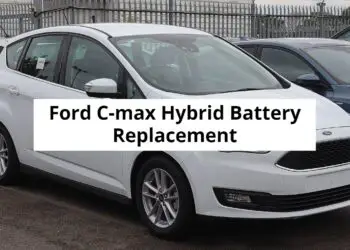Today we will consider what a regenerative braking system is, and its principle of operation. Also, we will compare the braking system of a conventional car with an internal combustion engine and an electric vehicle or a hybrid one. We will consider the effectiveness of regenerative braking and its disadvantages. So, the task for this article is outlined, let’s begin.
Any moving vehicle has great kinetic energy, which should go somewhere when the braking process occurs. All engineers used this fact, developing a braking system for electric vehicles.

How ICE vehicles traditional braking system work
Let’s remember where the kinetic energy of a car with ICE disappears at the moment of braking. At the time of braking, the brake pads are pressed to a metal brake disc mounted on the axis of the car, thereby creating friction, which slows down the rotation of the wheel. Moreover, all the kinetic energy.
For example, a passenger car weighing one and a half tons, which moves at a speed of, let us assume, 100 km / h, turns into heat and goes into the brake pads simply erasing them. That is, it is not only useless but also has a negative impact.
Regenerative braking in electric vehicles
But in electric vehicles everything is different. Since the question of increasing the power reserve of the battery is still open, the engineers decided to use this energy to recharge it. The savings are noticeable, and today it is difficult to find an electric car that does not use regenerative braking.
So, let’s now take a closer look at the principle of operation of the regenerative braking system of an EV.
In a common car, hydraulic pressure is used to create friction in a drum or disc brake. After that, kinetic energy is converted into thermal energy. This pressure is created by the driver when the brake pedal is depressed, which is usually boosted by an auxiliary system to reduce the applied force. Thus, the acceleration of vehicle deceleration is proportional to the force of the foot pressure on the brake pedal. Everything is simple and reliable. But we lose energy.
In electric vehicles, when we try to save braking energy for future use, we need to use two braking systems: The electric system is the first to enter into force it is also called the regenerative system. A regenerative braking system is one that returns part of the energy used for braking. That is, instead of the classical brake mechanism in the form of a disk or a drum, a traction motor acts, which goes into the generator mode.
You may also like to read: In-Depth Study – Traction Motors of EVs
Regenerative braking – Stage 1
At the first stage of braking, when the speed of rotation of the wheels is still high enough, the electric generator converts the energy of rotation of the wheel into electricity. A braking moment occurs on the motor shaft, which leads to a decrease in the speed of the car.
Let’s see why a braking moment appears. When the rotor rotates, the currents of the opposite direction appear in its winding and the stator winding. The interaction of these currents causes rotor braking. At the same time, kinetic energy stored by the vehicle is spent on generating electricity, and its depletion conversion into heat and electricity results in a decrease in the vehicle speed.
Regenerative braking – Stage 2
The second stage of braking regen is more effective. In terms of decelerating the car to zero speed, braking using friction. That is, a conventional hydraulic braking system takes effect. The coordination of the two brake subsystems hydraulic and electric – is handled by a special electronic unit which acts as an intermediary between the driver pressing the brake pedal and the electro-hydraulic braking system.
Thus, the direct connection of the driver with the brakes is lost, and the task of this electronic system is to make the driver not notice this. The brake control system has to constantly determine what the acceleration of deceleration should be in response to pressing the pedal by the user, and which system should be used in what proportion to save energy as much as possible and make deceleration proportional to the force applied to the brake pedal.
How braking regen works

We propose to systematize everything which was said in the form of a sequence of ongoing processes, this will give us a total understanding of this topic. The traction motor is disconnected from the power source (battery) when braking an electric vehicle. Then it goes into generator mode and produces energy independently.
You may also like to read: In-Depth Study – Electric Vehicle Batteries (High Voltage Traction Battery)
In this mode, oppositely directed currents occur in the windings of the rotor and stator. A braking torque occurs on the motor shaft. It provides braking of the vehicle, reducing its speed. At the same time, kinetic energy, stored by the machine is converted into electricity and heat. The electrical energy received is supplied to the battery. In this way, we can conclude that the more often the car slows down, the more its battery is charged.
Regenerative braking limitations
However, it should also be noted that regenerative braking has some limitations.
- A feature of modern batteries is that their recharging can occur only at certain values of current and voltage, which somewhat limits the range of energy recovery by regeneration. Second, it is not possible to charge a fully charged battery.
- The second remark is not so important for electric vehicles, since recovery for them is the only way to recharge on the go, unlike the hybrids that are recharged from their internal combustion engine. However, this is one of the factors that clearly shows us, that the traction battery of an electric vehicle does not need to be fully charged, somewhere around 90% will do. Also, modern lithium-ion batteries do not really “like” to be fully charged – this is due to the flow of electrochemical processes in them, which contribute to their accelerated degradation.
- The third feature, but rather even a disadvantage of this system is the limited usage. Recovery is not very effective in the city, especially when driving in a dense stream, an electric car can hardly accelerate normally. As a result, little energy is produced. Based on the third feature of the regenerative system the issue of its effectiveness arises.
Efficiency
If we talk about efficiency, manufacturers most often name the figure of 60-70% of the return of kinetic energy lost during braking. But you should also take into account the fact that, in principle, little energy is spent on braking, and the result cannot be called impressive. And again, everything is relative.
After all, the situation is much better when driving downhill and braking at high speed. Sometimes the power reserve of the vehicle is increased by 15-20%. And this is a decent result. It should also be noted that the size of the vehicle is crucial. This is because the larger and heavier the car, the more kinetic energy it releases when braking. In this case, small electric vehicles are in a less advantageous position, since they cannot oppose the laws of physics.
Thus, if we compare electric cars in terms of dimensions, we can be sure that larger electric cars have large indicators of the effectiveness of its regenerative system. So what do we have? The braking system of an electric vehicle or a hybrid one consists of two subsystems. The first is the electrical system regenerative braking, and the second is the hydraulic system conventional friction brakes Thanks to regenerative braking, we can save if not 100%, but a large proportion of kinetic energy.
However, science does not standstill. Engineers spend thousands of hours testing and improving the braking control system algorithms to make them fast and reliable.



